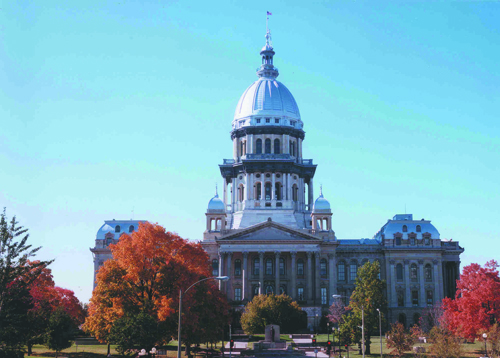Crime and Justice Scenario Outcome

The United States has the highest rate of imprisonment per capita in the world. Despite tremendous investment in dollars, its criminal justice system has been heavily criticized for not meeting the "Big Three E's"—Efficiency, Effectiveness, and Equity.
Pursuit of evidence-based, rational approaches that have a high probability of achieving justice and enhancing public safety can move the Northeastern Illinois region toward becoming one of the safest urban areas in the nation by 2040.
In coordination with an advisory committee of regional experts, the Illinois Criminal Justice Information Authority, along with the University of Illinois at Chicago (UIC) Center for Research in Law and Justice, has prepared general recommendations for actions to improve crime and justice within the long-term context of the GO TO 2040 plan. These include:
- Refine our understanding of the causes of crime and delinquency
- Address the needs of crime victims
- Fairness and equity in law enforcement strategies
- Community engagement and capacity building for a holistic approach to crime prevention and intervention
- Non-criminal justice solutions for drug offenders
- Alternatives to incarceration and offender re-entry
A report that provides more details on these recommendations is forthcoming and will be posted in this space when available; an executive summary is currently available.
Effect of physical planning decisions on crime and justice
The purpose of the questions below is to understand how today's planning policy and investment decisions – covering Transportation, land use, housing, economic development, and the natural environment – might affect crime and justice in our region in 2040.
How would crime and justice be affected by different economic development policies: focusing on investments in human capital (improving the region's workforce); infrastructure (investing in physical infrastructure such as Transportation facilities); or innovation (including but not limited to technological innovation)?
Investments in human capital, defined here to include education and social services, are especially linked to reductions in crime. Other economic development efforts, regardless of their type, can be part of effective "weed and seed" programs that simultaneously increase enforcement, social service provision, and economic development in certain targeted areas.
- "The link between poverty and crime at the community level is well established" (p. 4), and increasing incomes will likely lead to crime reductions. Whichever economic policy has the broadest increase in incomes, in terms of raising the incomes of currently lower-income people, is probably the best in terms of long-term crime reduction (in other words, increases in income that expand the income gap between wealthy and poor residents are unlikely to have positive impacts).
- Investing in physical infrastructure will likely have a number of positive effects on crime, given that physical decline in housing, local parks and facilities are perceived as "signs of disorder" and invite criminal activity at the neighborhood level.
- Closing the "digital divide" by providing Internet access to low-income households should improve economic opportunities (e.g. wider job searches) and establish a mechanism for citizens to report inequities in the administration of justice.
How would crime and justice be affected by different transportation investment alternatives: focusing on major infrastructure investments (road or rail expansions); low-capital operational improvements (improved bus service, sidewalks, and trails); or technology (including real-time information or improved traffic signal timings)?
- The type of investment is less important than its outcome. If the transportation investment increases access to jobs and services, particularly from areas where at-risk individuals and ex-offenders are concentrated, it will likely have a positive impact. Low-income families will need affordable public transportation that gives them easy access to job opportunities throughout the region (e.g. customer satisfaction surveys).
How would crime and justice be affected by different land use policies: focusing on dense, infill development; moderate densities with emphasis on community-centered design; or low-density new development?
- The density of land use is far less important than the strength of the community. Community crime prevention and community policing strategies are shown to be effective and are recommended to be expanded. Land use planning, regardless of density, should foster a sense of community to make these strategies more effective, because positive relationships between law enforcement officials and the public are needed. Creating a mix of land uses, rather than single-use areas like entertainment districts, also has benefits for crime reduction. Crime is prevented when local residents feel a sense of community and exercise informal social control over users of the local environment (e.g. sharing information, surveillance and informal persuasion).
How would crime and justice be affected by housing policies: preserving existing affordable housing; creating new affordable housing near transit and jobs; or reducing housing costs through energy efficiency improvements?
- Crime can be prevented by providing low-income residents the opportunity to find housing in communities where their families can flourish. Investing in mobility housing programs (e.g. Section 8 properly designed) will give low income parents and their children the choice of living in better neighborhoods with better schools and greater employment opportunities. Housing decisions that seek to break up concentrated urban poverty will go a long way toward reducing the risks of criminality.
- Crime can also be prevented by ensuring that formerly incarcerated people have options for affordable housing; without this, they are more likely to re-enter prison.
- Research on "crime prevention through environmental design" (CPTED) also suggests that new housing should be designed to encourage natural surveillance and create a sense of community.